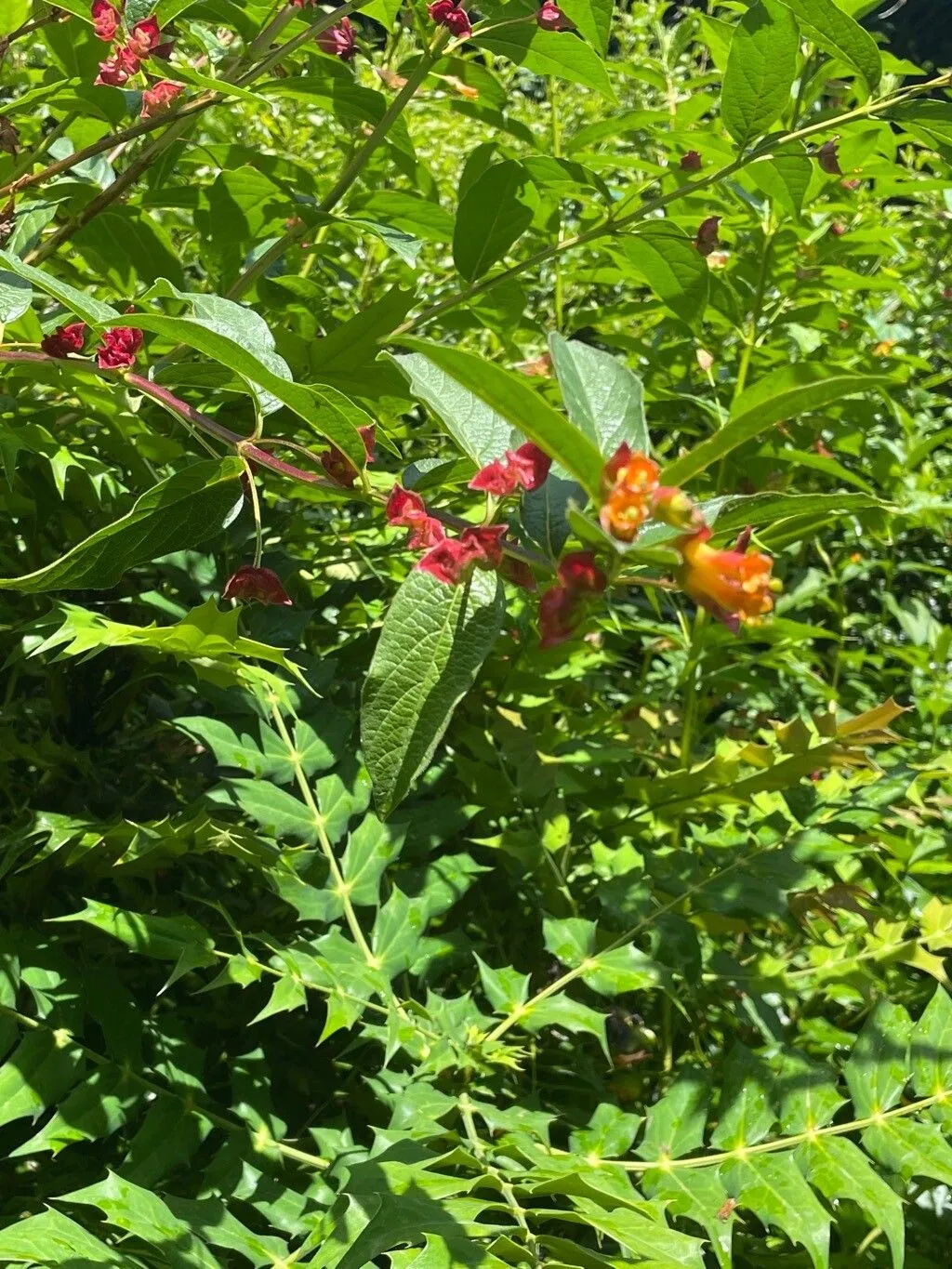
Author: (Richardson) Banks ex Spreng.
Bibliography: Syst. Veg. 1: 759 (1824)
Year: 1824
Status: accepted
Rank: species
Genus: Lonicera
Vegetable: False
Observations: Subarctic America to Mexico (Sonora, Durango, Chihuahua)
California honeysuckle, scientifically known as Lonicera involucrata, is a captivating plant that thrives across a wide geographic range from Subarctic America down to Mexico, including regions such as Sonora, Durango, and Chihuahua. This deciduous shrub belongs to the Caprifoliaceae family, a group renowned for its attractive and aromatic flowering plants.
Named and described in the seminal botanical reference “Systema Vegetabilium” in 1824, California honeysuckle was identified by the botanist Richardson, with Banks and Sprengel later playing pivotal roles in its classification. This historical context adds to the shrub’s botanical significance.
Typically found in moist, wooded areas, California honeysuckle is notable for its robust growth and vibrant appearance. It is characterized by its opposite leaves and prominent tubular flowers, which can range from yellow to dark red in hue. Following the flowering stage, the plant produces small, black berries that are a vital food source for various bird species.
California honeysuckle is not only important ecologically, providing habitat and sustenance for wildlife, but it is also valued horticulturally. Gardeners and landscapers appreciate its ornamental qualities and its ability to attract pollinators such as hummingbirds and butterflies. When planting Lonicera involucrata, it is essential to consider its natural habitat and provide similar conditions to ensure healthy growth.
In summary, California honeysuckle is a resilient and striking plant with a broad native range across North America. Its detailed botanical history, ecological roles, and aesthetic appeal make it a cherished member of the Caprifoliaceae family.
Deu: behüllte heckenkirsche, immergrüne strauch-heckenkirsche
Swe: broksalvia, kehtokuusama, skärmtry
Eng: california honeysuckle, californian honeysuckle, twinberry honeysuckle, bearberry honeysuckle, black twinberry, twinberry, bracted honeysuckle, four-line honeysuckle, involucred fly-honeysuckle
Dan: dusk-salvie, svøb-gedeblad
Fin: kehtokuusama
Nno: skjermleddved
Nob: skjermleddved
Fra: chèvrefeuille involucré, chèvrefeuille à involucres
Cym: gwyddfid califfornia, gwyddfid california
En: California honeysuckle, Bearberry honeysuckle, Black twinberry, Twinberry, Black twinberry honeysuckle, Twinberry honeysuckle, Californian Honeysuckle, Bracted honeysuckle, Four-line honeysuckle, Involucred fly-honeysuckle
Da: Dusk-salvie, Svøb-gedeblad
Fi: Kehtokuusama
Fr: Chèvrefeuille involucré, Chèvrefeuille à involucres
De: Behüllte Heckenkirsche, Immergrüne Strauch-Heckenkirsche
Nb: Skjermleddved
Nn: Skjermleddved
Sv: Broksalvia, Kehtokuusama, Skärmtry
Cy: Gwyddfid Califfornia, Gwyddfid California
Taken May 31, 2021 by Norma Leveille (cc-by-sa)
Taken Jul 23, 2021 by Anezki (cc-by-sa)
Taken Jul 29, 2022 by David Hocken (cc-by-sa)
Taken Jul 28, 2019 by Kathy Munch (cc-by-sa)
Taken Jun 24, 2021 by Haley Schmidt (cc-by-sa)
Taken Jul 4, 2021 by Alia Kolodychuk (cc-by-sa)
Taken Jun 29, 2022 by David Hocken (cc-by-sa)
Taken Jul 28, 2021 by zeal shukla (cc-by-sa)
Taken Mar 21, 2021 by che María (cc-by-sa)
Taken Jul 29, 2022 by David Hocken (cc-by-sa)
Taken Jun 12, 2014 by EOL − Jennifer Rycenga (cc-by-nc)
Taken Jun 9, 2014 by EOL − naturalist eve (cc-by-nc)
Taken Jun 9, 2014 by EOL − naturalist eve (cc-by-nc)
Taken Jun 29, 2022 by David Hocken (cc-by-sa)
Taken Jun 16, 2022 by Brittany Ulrich (cc-by-sa)
Taken Aug 3, 2021 by J Dugdale (cc-by-sa)
Taken Aug 8, 2021 by jill mcginnis (cc-by-sa)
Taken Aug 11, 2019 by Sean Sean Prater (cc-by-sa)
Taken Jun 9, 2019 by Ven. Kristian (cc-by-sa)
Taken Jul 18, 2017 by Tela Botanica − _ (cc-by-sa)
Taken Jul 28, 2005 by EOL − Steven J. Baskauf (cc-by-nc-sa)
© copyright of the Board of Trustees of the Royal Botanic Gardens, Kew.
© copyright of the Board of Trustees of the Royal Botanic Gardens, Kew.
© copyright of the Board of Trustees of the Royal Botanic Gardens, Kew.
Growth form: Single Stem
Growth habit: Shrub
Growth rate: Moderate
Ph maximum: 8.0
Ph minimum: 5.5
Family: Myrtaceae Author: (F.Muell.) K.D.Hill & L.A.S.Johnson Bibliography: Telopea 6: 402 (1995) Year: 1995 Status:…
Family: Rubiaceae Author: Pierre ex A.Froehner Bibliography: Notizbl. Bot. Gart. Berlin-Dahlem 1: 237 (1897) Year:…
Family: Sapindaceae Author: Koidz. Bibliography: J. Coll. Sci. Imp. Univ. Tokyo 32(1): 38 (1911) Year:…
Family: Asteraceae Author: A.Gray Bibliography: Pacif. Railr. Rep.: 107 (1857) Year: 1857 Status: accepted Rank:…
Family: Fabaceae Author: Medik. Bibliography: Vorles. Churpfälz. Phys.-Ökon. Ges. 2: 398 (1787) Year: 1787 Status:…
Family: Aspleniaceae Author: (Cav.) Alston Bibliography: Bull. Misc. Inform. Kew 1932: 309 (1932) Year: 1932…